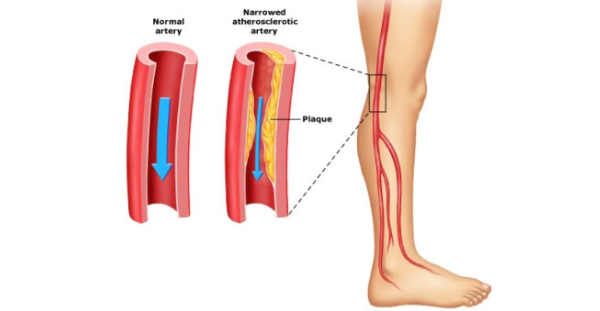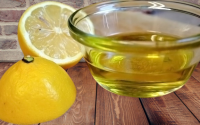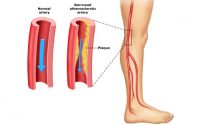8 Tips for Living With Peripheral Artery Disease

Source: medgadget
The condition happens when plaque builds up in your arteries. This makes it harder for your arms, legs, head, and organs to get enough blood.
Although it’s serious and can sometimes be painful, there are lots of ways to slow it down or even stop it. Start with these tips for exercise, foot care, and eating well.
1. Walk and Rest
You need to exercise when you have PAD. It’s is good for just about everyone who has this condition.
But how do you exercise if it hurts? There are ways to do your workouts and control the pain.
First of all, listen to your body and learn when to pause. If your legs bother you on a stroll, take a break. Wait for the pain to fade and begin again. By resting then starting again, you’ll build up your body. Start slowly but don’t give up.
Stretch before and after you take a walk. Try to pick a route that keeps you close to home so that you can get back quickly if you need to.
You may have to start slowly, but the more you walk, the farther you will be able to go. And the more you move, the better it is for you.
2. Find the Right Exercises
Talk with your doctor about what activities are best for you. She may suggest exercise plans that have been shown to curb PAD symptoms. Try to get 30 minutes of activity several times a week after your appointment.
Choose exercises you enjoy, so you’ll stick with them. Bored with walking? Maybe you can find a swimming pool or ride a bicycle. Perhaps a fitness class or yoga is your speed.
You might want to ask a friend or two to exercise with you. That often makes it more fun and you can keep each other on track. If you can afford it, a personal trainer can keep you focused on your goals.
Working out does more than reduce your PAD symptoms. It also helps to lower your blood pressure and “bad” cholesterol levels. And it’s good for your heart and just about every part of your body.
3. Take Care of Your Feet and Legs
People feel PAD most often in their legs, especially the calves or thighs. When blood can’t flow freely, you may feel pain or numbness. You’re more likely to ache when you walk or do some kind of activity because that’s when your muscles need more blood.
Wear shoes that fit you well. You want to be as comfortable as possible when you walk.
Check your feet and toes every day for sores, cracks, or anything that doesn’t look right. Sores may not heal well. If you see bumps or thick, hard patches of skin, these might be bunions, corns, or calluses. You may need to get these treated by a foot doctor, called a podiatrist.
When blood can’t flow freely into your legs and feet, you’re more likely to get an infection. So a tiny sore can become a bigger problem. When you see things on your feet that don’t look right, talk to your doctor.
When you keep your feet in good shape, you’ll be more likely to stick with your exercises and less likely to get an infection that could cause a serious problem.
Wash your feet every day and dry them. Use warm water, not hot. Don’t let them soak too long because your skin could dry out. Wiggle your toes several times a day to keep the blood flowing.
Ask your doctor for other ideas on keeping them in tip-top shape.
4. Stay Warm
Try to avoid being in the cold as much as possible. In the middle of winter, see if you can find a place indoors to work out.
If you have to be outdoors and it’s freezing, dress in layers and wear thick, dry socks. Try not to let the weather stop you from being active.
5. Quit Smoking
Smoking makes your condition worse, because it makes it harder for your arteries to carry blood.
If you have a hard time quitting, ask your doctor for help. She may be able to steer you toward support groups, programs, and other ways to help you cut back and stop.
6. Avoid Certain Cold Medicines
Some over-the-counter brands contain a medication called pseudoephedrine. While it can give you relief during a cold or allergy outbreak, it has side effects. The drug narrows your blood vessels, which can worsen your PAD symptoms.
Check the label or ask your pharmacist.
7. Eat Well
It helps to eat a diet that’s good for your heart with lots of fruits, vegetables, and whole grains. You may need to cut back on salt, sugar, alcohol, and the saturated fats that are common in animal products. You should skip artificial trans fats. To avoid them, look for ingredients that are labeled “partially hydrogenated.”
At first, you may inwardly groan and think about what you have to give up. But a lot of tasty foods will remain on your list — and this is a chance to maybe pick up some new cooking skills. You might want to join a cooking class especially for people who are learning the same new habits.
Ask your doctor or a dietitian about ways you can make the foods they want you to eat taste better.
Have you heard of the Mediterranean diet? It’s good for you, and it has a lot of things many people find delicious: olive oil, fish and other seafood, nuts, beans, tomatoes, cucumbers, and other veggies.
8. Keep Up With Your Appointments
Make sure you check in with your doctor when she asks you to come back for follow-ups. If she prescribed you medication for your condition, take it with you.
Sometimes, people with serious conditions start to feel anxious or depressed about it. If that happens to you, ask your doctor to recommend a counselor or support group.
Also tell your doctor about any pain you have, especially if it stops you from exercising. She may have more ideas to reduce the aches — massage therapy, for instance — so you can get back to feeling better.


